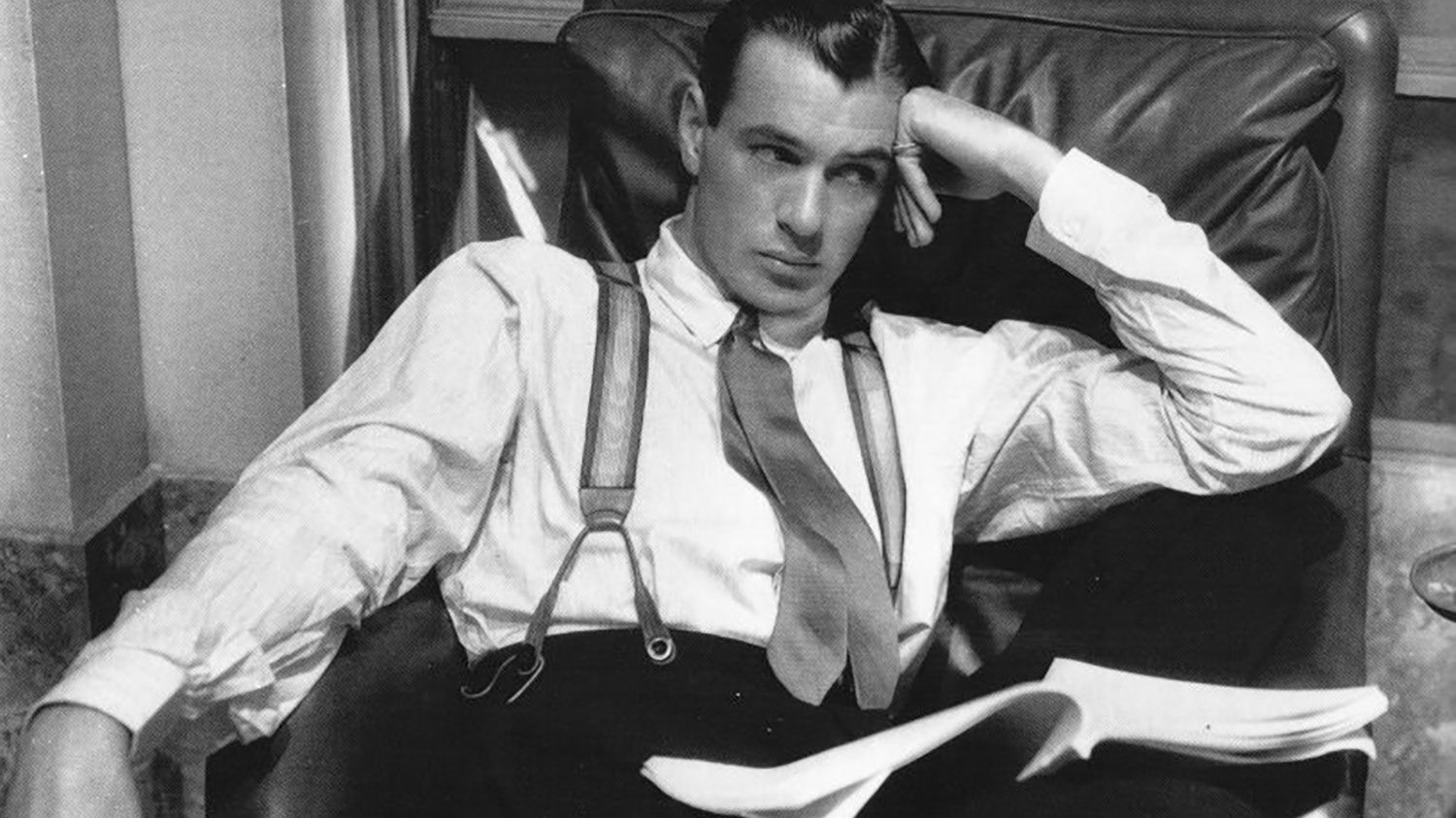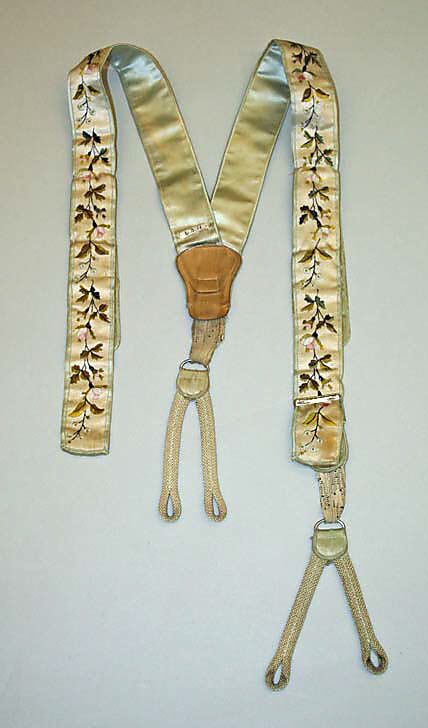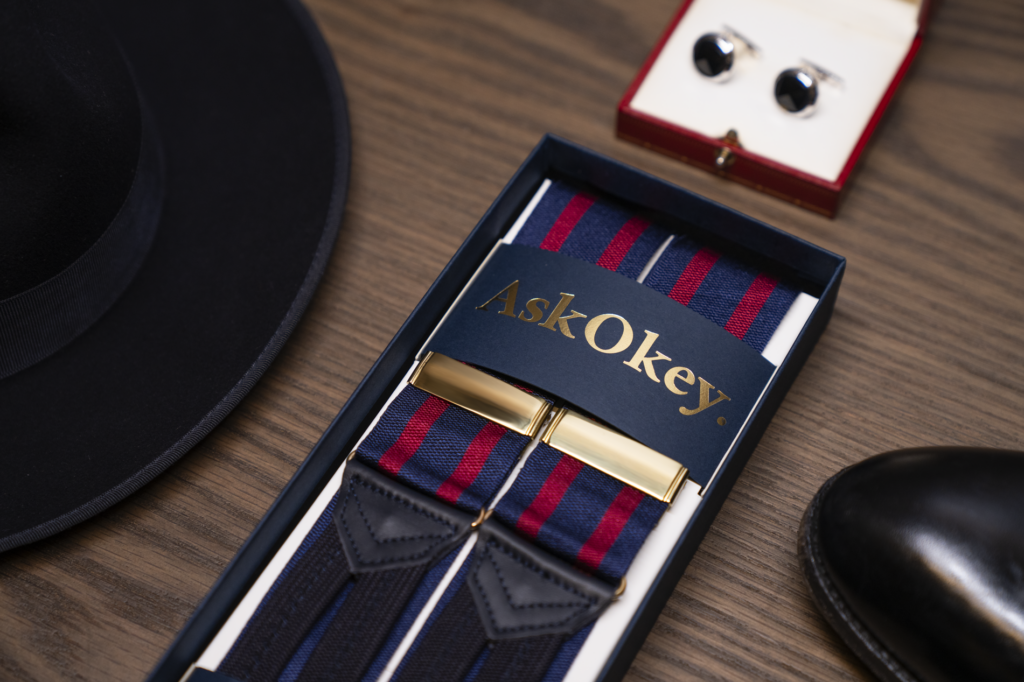Braces
Braces, known in America as “suspenders”, are one of the unsung heroes of menswear – always there in the background (traditionally, covered by the waistcoat), never mentioned, or at least not often discussed.

And they have changed very little over the years. First noted in the 18th century, they were called “bretelles”, and have more or less kept their shape since, though the fabrics have evolved a bit. What did 18th century braces look like? The picture below shows the tabs on a pair of braces from about 1760.
They are slightly decayed, but the shape is recognisable. The buckles, tabs, an attractive fabric show very little difference between the modern and ancient forms, but there are button holes, as one finds today, and clearly visible the cloth straps.

In the 19th century, with mass production, braces were sold, rather than made bespoke, and what might be called a household name, in the world of braces, Albert Thurston invented the modern braces that we know and love today.
Thurston’s first model in 1820 featured the “H-back” model, two straps with a piece holding the two straps together at the back. Later developments were the X and Y-back designs. You can buy all three types today. Thurston’s braces had leather loops and heavy cloth straps, which is what we still expect. And, equally significant, Thurston called them “braces”, rather than “bretelles”.

The history out of the way, why would you want a pair of braces, or several pairs? The answer is physics. Trousers are meant to hang, and they can only hang if they are suspended. They ought to hang from the shoulders, because it is impossible for them to hang from the hips (the only other possibility). The belt does not work as a suspension device, regardless of its use as a fashion accessory.
We should also note that braces are pointless with low-waisted trousers built to hug the hips – these trousers are not designed to hang.
AskOkey has chosen the venerable Albert Thurston to supply braces for our discerning customers. Currently available in four classic colorways and more coming soon, they represent a quintessential strand in the great tradition of bespoke menswear.